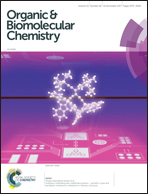1,3-Dibromo-5,5-dimethylhydantoin mediated oxidative amidation of terminal alkenes in water†
Abstract
A variety of terminal alkenes were converted to the corresponding amides in yields of 25 to 86% in water via treatment with 1,3-dibromo-5,5-dimethylhydantoin, followed by reaction with molecular iodine and aq. NH3 (or amine) in one pot. This metal- and organic solvent-free protocol is not only suitable for styrene derivatives, but also, for the first time, works well on terminal aliphatic alkenes.



 Please wait while we load your content...
Please wait while we load your content...